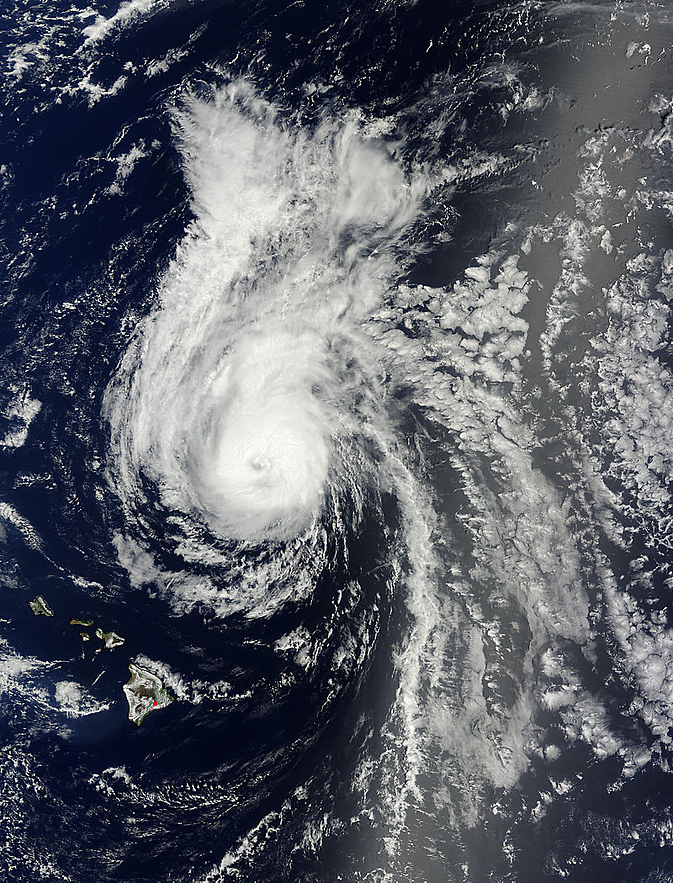Julio Embarking on Weakening Trend

This Terra satellite image shows Hurricane Julio just north of the Hawaiian Islands on August 10, 2014 at 20:40 UTC. Image Credit: NASA Goddard MODIS Rapid Response Team
Julio's position at this point is 395 miles northeast of Honolulu, Hawaii moving northwest at 8 knots per hour.
Julio is moving toward the northwest near 9 mph, 15 km/h.
Maximum sustained winds are near 75 mph, 120 km/h, with higher gusts.
Julio is expected to weaken slightly over the next 48 hours, down to tropical storm strength by tonight.
At present, hurricane force winds extend outward up to 25 miles, 35 km, from the center, and tropical storm force winds extend outward up to 155 miles, 250 km.
Julio is moving northwest and has embarked on a weakening trend. The storm is anticipated to pass to the north of the Hawaiian islands.
Julio is expected to continue moving northwest through Wednesday, then gradually turn north into the open Pacific.
Large swell will produce dangerous surf conditions on east coasts of most Hawaiian islands.
Text credit: Lynn Jenner
NASA's Goddard Space Flight Center
Media Contact
More Information:
http://www.nasa.gov/content/goddard/julio/All latest news from the category: Earth Sciences
Earth Sciences (also referred to as Geosciences), which deals with basic issues surrounding our planet, plays a vital role in the area of energy and raw materials supply.
Earth Sciences comprises subjects such as geology, geography, geological informatics, paleontology, mineralogy, petrography, crystallography, geophysics, geodesy, glaciology, cartography, photogrammetry, meteorology and seismology, early-warning systems, earthquake research and polar research.
Newest articles

A universal framework for spatial biology
SpatialData is a freely accessible tool to unify and integrate data from different omics technologies accounting for spatial information, which can provide holistic insights into health and disease. Biological processes…

How complex biological processes arise
A $20 million grant from the U.S. National Science Foundation (NSF) will support the establishment and operation of the National Synthesis Center for Emergence in the Molecular and Cellular Sciences (NCEMS) at…

Airborne single-photon lidar system achieves high-resolution 3D imaging
Compact, low-power system opens doors for photon-efficient drone and satellite-based environmental monitoring and mapping. Researchers have developed a compact and lightweight single-photon airborne lidar system that can acquire high-resolution 3D…





















